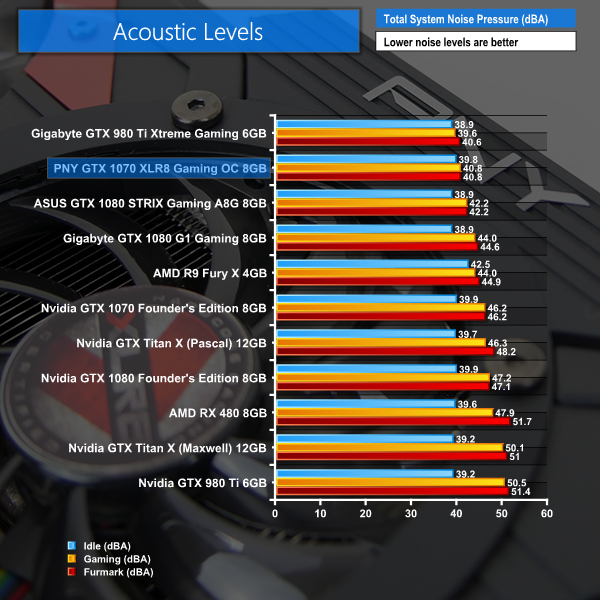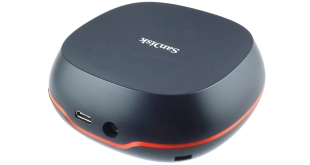Noise output of the graphics card is measured using the fan speed percentage associated with each of the temperature recordings displayed on the previous page.
In order to focus solely on the noise output by the graphics card in question, we disconnect all fans from the test system so that the only moving parts are the Corsair H110i GT's pump and any components relating to the graphics card.
The NZXT Phantom 630's side panel is removed in order for us to focus specifically on the graphics card's noise emissions. We also place the acoustic measurement equipment very close to the graphics card (around 10 cm away from it) in order to better detect noise differences between each graphics card. This is also a scenario that will be similar to a user who has their system sat on the desk directly next to where they are sitting.
The background noise level sits around 38.9 dBA with the test computer running.
You'd be forgiven for thinking that acoustics may suffer given the XLR8 cooler's good thermal performance but they don't. Idle noise output wasn't great due to the lack of a 0dB fan mode but under heavy load the fan speed stayed well below 50% (around 1600 RPM) and never got intrusive. In fact, the fans were barely audible most of the time and you'd be unlikely to pick out noise coming from the GPU cooler over the emissions from chassis fans or an AIO.
Our sample did not exhibit any coil whine except in scenarios where the frame rates were in the high-hundreds, such as game loading screens.
 KitGuru KitGuru.net – Tech News | Hardware News | Hardware Reviews | IOS | Mobile | Gaming | Graphics Cards
KitGuru KitGuru.net – Tech News | Hardware News | Hardware Reviews | IOS | Mobile | Gaming | Graphics Cards



